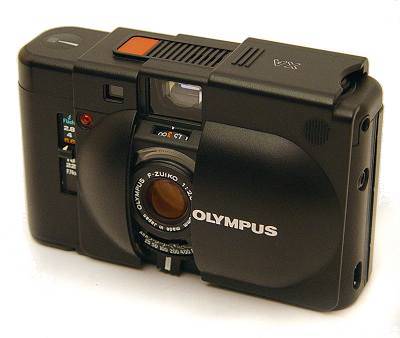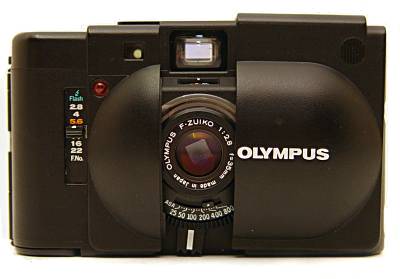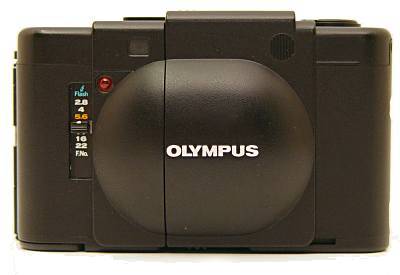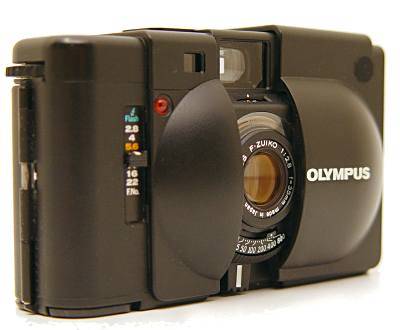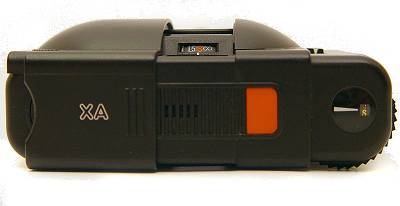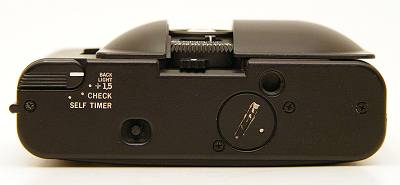|
Olympus always used to be known as a company pioneering revolutionary camera concepts and designs. Most Olympus cameras, particularly the 1960's and 70's rangefinders, have features which in one or the other aspect represent a novelty with respect to comparable models of their time. The XA supports this point of view. Reducing it to a single line, the Olympus XA provides the full functionality of a rangefinder camera in combination with extremely small outer dimensions. Keep in mind that at the time this camera was put on the market, it was released in 1979, the only other "small cameras" were the Minox and the Rolllei 35. These are fine cameras as well, but they both provide less features and/or show odd and inconvenient construction details due to the limited space available. For example, the Rolllei 35 has the frame counter and accessory shoe on the bottom plate and the winding lever has to be operated with the left hand - and it is not that small. And both the Minox and the Rolllei 35 lack a distance meter. The Olympus XA does have a distance meter. The window for the secondary image can be seen on the front when the cover is open. The 16mm measuring basis is small, but suffices for focusing the 1:2.8 35mm lens and the results are much more reliable and reproducible than if you merely guess the distance. The light meter is located above the lens. The camera works in semi-automatic aperture-priority mode, the exposure times are shown in the viewfinder. Furthermore there is a battery check, a +1.5 stop back-light exposure correction and a self timer operated via a switch on the camera bottom. The lens is a sharp and contrasty six element F-Zuiko 35mm moderate wide angle. Note that the overall thickness of the body is 40mm and the distance from the front of the lens to the film plane amounts to 30mm. That is, the space available within the camera is smaller than the focal length. In other words, the effective lens centre lies outside of the body, an inverted retrofocus design. Although the camera is so compact, it is very convenient to use. All operating elements are positioned such that you intuitively find them. The shutter is very quiet and fast, the release reacts to the slightest touch. Therefore the camera can be held quiet and exposure times up to 1/15 sec or more can be used. The protecting front door is very useful superseding an additional case. The film is wound by a thumbwheel, which works smoothly. Minor flaws are the rather strong distortion of the finder and the annoyingly beeping self timer. Subsequent models were the XA2, a simplified version with a slower lens and no distance meter, the XA3, identical to the XA2 but with DX code recognition, and the XA4 featuring a 28mm wide angle and macro option. Obviously the size and design anticipates the later Olympus µ models. There are two dedicated flashes for the XA series, the compact A11 and the stronger A16. The flash is attached at the side of the camera body and is activated via the aperture control slider.
|
|
